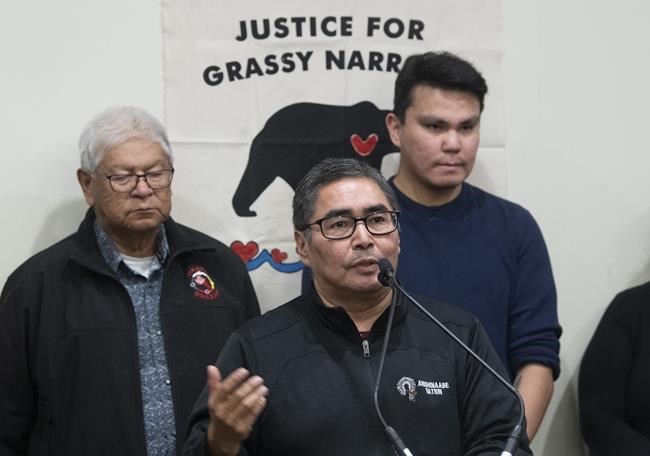THUNDER BAY – Two northwestern Ontario First Nations hard hit by mercury poisoning from a Dryden pulp and paper mill have received commitments from the federal government for the construction of treatment centres in their communities.
Asubpeeschoseewagong Netum Anishinabek, or Grassy Narrows, and Wabaseemoong, also known as Whitedog, have each been promised funding for the centres by Indigenous Services Marc Miller.
Miller has confirmed the government will spend $19.5 million to establish a centre in Grassy Narrows. The minister told APTN that construction on the facility will begin “as quickly as reasonably possible given the fact that we’re in a global pandemic.”
Chief Rudy Turtle said the community is still counting on a further $60 million or more in long-term funding to maintain the centre. Earlier talks between the First Nation and the federal government had broken down when the government refused demands from the community to place that long-term funding in a trust. That larger figure still requires cabinet approval.
Wabaseemoong chief Waylon Scott confirmed his community had secured a similar commitment. Scott met with Miller in recent weeks, and expects a framework agreement to be signed with the government soon.
Though Scott could not comment on the details of the commitment, he said Wabaseemoong is the largest First Nation in the Kenora region and is dealing with medical problems similar in scope to those in Grassy Narrows. He expected the size of the facility to reflect that reality.
Researchers have found over 90 per cent of residents in the two communities show signs of mercury poisoning. A Dryden pulp and paper mill, owned at the time by Reed Paper, discharged mercury-contaminated effluent into the English-Wabigoon River in the 1960s.
Researchers have found that had significant health impacts for both First Nations downstream, though Grassy Narrows has often been the public face of the issue.
Kenora MP Eric Melillo, who used his first question in the house of commons to press the government on the treatment centre last year, says the government’s commitment is overdue but very welcome news.
“It’s obviously an issue that’s been going on for decades, for far too long,” he said. “It’s an issue of equality, it’s an issue of quality of life for the people of Grassy Narrows. This is something the government had committed to, and I think it’s very important we held their feet to the fire to ensure they came through in the end.”
